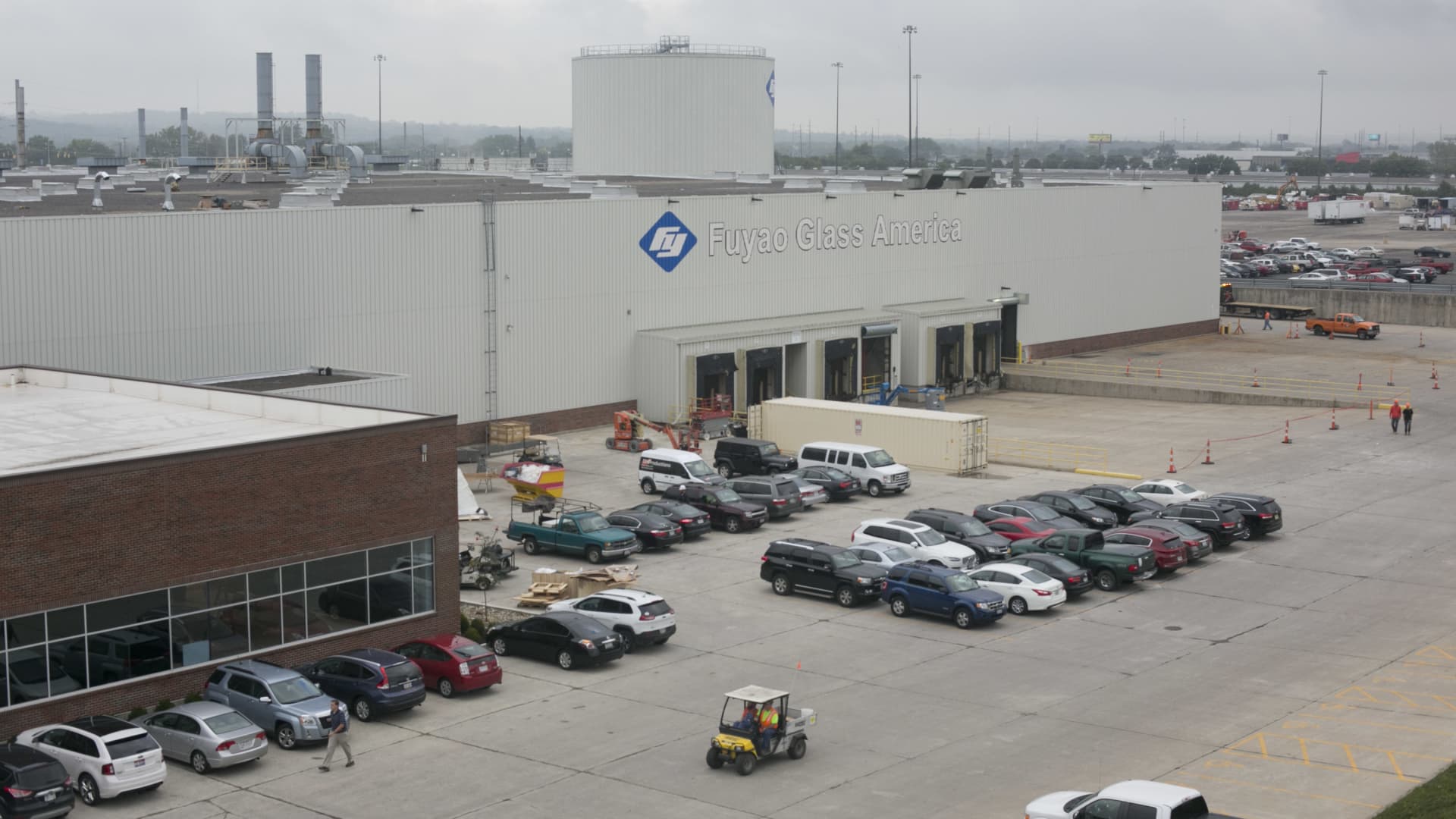Cho Tak Wong, the chairman of auto glass giant Fuyao Glass, bought the vacant General Motors manufacturing plant in Moraine, Ohio in 2014.
The Washington Post | The Washington Post | Getty Images
Chinese investments in the U.S. have dramatically declined since Donald Trump’s first term. This trend is unlikely to reverse as Trump returns to the White House, analysts said.
Trump has threatened additional tariffs on Chinese goods soon after his inauguration on Monday, building on an increasingly tough U.S. stance on Beijing.
“That’s probably the last thing on Trump’s mind, is trying to incentivize [Chinese companies] to invest here,” said Rafiq Dossani, an economist at U.S.-based think tank RAND.
“There’s an ideological mismatch. All the rhetoric is, keep China out of the U.S., let their products come in, which are low-end,” he said in an interview earlier this month. But other than that, “don’t, don’t let them come in.”
In the last several weeks, Emirati property giant Damac has pledged $20 billion to build data centers in the U.S., while SoftBank CEO Masayoshi Son announced a $100 billion investment for artificial intelligence development in the U.S. over Trump’s four-year term.
Chinese investment deals in the U.S. have slowed drastically, according to the latest American Enterprise Institute data. Just $860 million flowed into the U.S. in the first six months of 2024, following $1.66 billion in 2023. That’s down sharply from $46.86 billion in 2017, when Trump began his first term.
At the peak, Chinese companies had made high-profile U.S. acquisitions, such as buying the Waldorf Astoria hotel in New York. But regulators on both sides have stemmed the flow.
“Chinese investment in the U.S. has slowed down dramatically since Beijing tightened control over capital outflows in 2017, followed by a series of regulatory policies in the U.S. aimed at excluding investments in certain sectors,” Danielle Goh, senior research analyst at Rhodium Group, said in an email.
In the “foreseeable future,” she doesn’t expect Chinese investments in the U.S. will recover the peak levels seen during the 2016 to 2017 period. Goh pointed out that instead of acquisitions, Chinese companies have turned more to small joint ventures with U.S. companies or greenfield investments, in which business are built from scratch.
For example, Chinese battery manufacturing company EVE Energy is the technology partner with a 10% stake in a joint venture with U.S. engine company Cummins’ Accelera division, Daimler Truck and PACCAR. The companies announced in June 2024 they were kicking off plans for a battery factory in Mississippi that would begin production in 2027 and create more than 2,000 jobs.
Since the Covid-19 pandemic, the U.S.-China Chamber of Commerce has mostly helped Chinese e-commerce companies set up local offices, rather than establish manufacturing businesses, the nonprofit’s president Siva Yam told CNBC.
“Most of those investment nowadays tend to be a little bit smaller, so they are not on the radar, easier to approve,” he said, referring to regulators in both the U.S. and China. But he remained uncertain about whether Chinese companies could use investments to offset the impact of tariffs.
Individual U.S. states have grown increasingly wary of Chinese investment. Last spring, Politico reported that more than 20 states were passing new restrictions on land purchases by Chinese citizens and companies, or updating existing rules.
Chinese hackers in December targeted a government office that reviews foreign investment in the United States, CNN reported, citing U.S. officials. This was part of a wider breach of the Treasury Department, which declined a CNBC request for comment.
Deal-making strategy?
Trump has indicated tariffs may be used to coerce Chinese investment in the U.S.
In his speech accepting the Republican nomination, he said, “I will bring auto jobs back to our country, through the proper use of taxes, tariffs, and incentives, and will not allow massive auto manufacturing plants to be built in Mexico, China, or other countries.”
“The way they will sell their product in America is to BUILD it in America, and ONLY in America. This will create massive jobs and wealth for our country,” he said, according to an NBC News transcript.
Chinese battery giant CATL reportedly said in November it would build a U.S. plant if Trump allowed it. The company did not immediately respond to a request for comment.
Advocacy group Center for American Progress pointed out in December that during his first term, Trump cancelled restrictions on Chinese telecommunications company ZTE — just days after the Chinese government and Chinese banks invested $1 billion in a Trump Organization-affiliated theme park in Indonesia.
The Trump transition team did not immediately respond to a request for comment on the ZTE deal or the opportunities for Chinese companies to invest in the U.S.
Even if Trump welcomed more Chinese investment, or coerced it through tariffs, large investments are long-term processes that won’t happen overnight, pointed out Derek Scissors, senior fellow at the American Enterprise Institute.
Then there’s the unpredictability of the president-elect’s policies.
“Trump saying the U.S. is open to Chinese companies in 2025 is no guarantee [even] for 2029,” he said.

 Blog Post1 week ago
Blog Post1 week ago
 Economics1 week ago
Economics1 week ago
 Finance1 week ago
Finance1 week ago
 Personal Finance1 week ago
Personal Finance1 week ago
 Accounting1 week ago
Accounting1 week ago
 Economics1 week ago
Economics1 week ago
 Personal Finance6 days ago
Personal Finance6 days ago
 Personal Finance1 week ago
Personal Finance1 week ago










